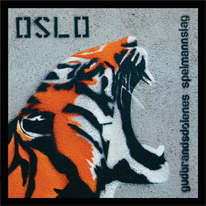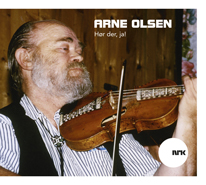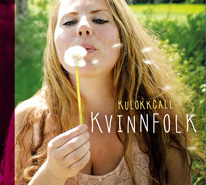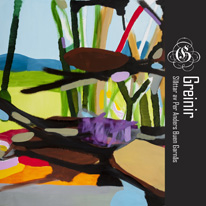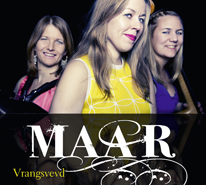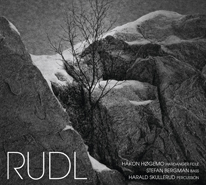Tvillingbrør og felespelarar
Tvillingbrørne Alfred og Mattias Bismo var fødde den 28. september 1918. Faren var snikkar. Av mange vart han kalla hjulmakaren. Han laga kjerrer og vogner, men han var også den faste likkistesnikkaren i bygda. Alfred og Mattias hadde to eldre brør. Dei to smågutene synte tidleg interesse for musikk. Den første fela kom i hus som betaling for eit bokskåp til ein far som ikkje fekk vekt ei tilsvarande interesse hos sine barn. Sidan kosta Alfred og Mattias seg feler sjølve. Med ei munnladingsbørse skaffa dei seg gode dagløner på ekornjakt, og av inntekta vart det instrument. Mange hadde ærend til snikkaren i Bismoen. Det var gardbrukarar og andre. Samtalane kunne gå livleg om alle slags emne. Somme hadde vore på anlegg, andre var komne heim frå Amerika. Ein slik var spelmannen Hans Skamsar. Eit barnlaust ektepar var komne frå Amerika og hadde kjøpt ein gard i grannelaget. Der tok dei imot gamle og pleietrengande, slike som tidlegare ville ha kome på legd. På gamleheimen såg reisande emissærar ei arbeidsmark med andaktene og songane sine. Men der fanst også eit par gamle formidlarar av folkemusikk. Den eine heitte Ola Gjerdet, den andre Ola Banken. Ola Gjerdet hadde budd i mange år på Sunnmøre, og var kjend både med dobbeltgrep og posisjonsspel på fela. Frå tidleg i livet hugsa han storspelmannen og sambygdingen Fel-Jakup, som døydde i 1876. Emil Bruheim var femten år eldre enn Bismo-tvillingane.
Han hadde lært slåttar av dei to eldre karane som han kunne formidle vidare. Kvar søndag kom Rolv Skjåkøygard i besøk til snikkarfamilien i Bismoen. Han var tunghøyrd og kunne vera vanskeleg å forstå når han tala. Musikalsk hadde han utvikla sitt eige språk, som han formidla gjennom eigne stykke på fela. Naturinspirerte komposisjonar kunne bli innleidde verbalt med programfråsegner og påkallingar. Musikk som av mange vart møtt med skratt, vart her i huset motteken med respekt.
JAKUPTRADISJONEN I SKJÅK – RIKKAR SKJELKVÅLE
Ein kjær gjest eit par gonger i året var Rikkar Skjelkvåle (1890-1976). Han var ein stor gardbrukar i Skjåk, og dreiv med vidløftig verksemd andre stader i landet. Rikkar var spelmann, og kunne også leggje ut på konsertturnear. Dei praktiske ærenda til snikkarverkstaden i Bismoen let han kona ta seg av. Sjølv oppsøkte Rikkar dei to speleglade gutungane. I 1982 fortalde Alfred og Mattias på lydband om oppveksten sin. Når Rikkar kom, gjerne frå morgonen, bar det til eldhuset med dei tre, og der vart dei haldande på heile dagen, og aldersskilnad fanst ikkje mellom dei. Trass i ulikskap på andre område, var dette eit forhold som skulle vara livet ut.
Musikalsk skyldskap sat djupare enn politisk motsetnad. Da den andre verdskrigen braut ut, var Alfred og Mattias 21 år gamle. Under okkupasjonen var båe aktive i motstandskampen. Alfred var dessutan medlem i Kommunistpartiet. Vennen og førebildet frå barneåra, Rikkar Skjelkvåle, hadde sterke meiningar som gjekk i motsett retning. Men medlem i Nasjonal Samling var han ikkje.
Komponisten David Monrad Johansen hadde ei høg stjerne blant mange som dyrka folkemusikken. Men under okkupasjonen var han ein av dei som fekk namnet pletta. I lang tid hadde det vore ein nær vennskap mellom Rikkar Skjelkvåle og den kjente komponisten.
Ein dag i 1946 oppsøkte Rikkar Alfred Bismo og spurde om ikkje dei to kunne gjera ein aksjon i lag for å hjelpe Monrad Johansen. - Med dei småmonsane som styrer landet nå, hermde Alfred etter Rikkar mange år seinare, er det ikkje hjelp å vente for slike som han. Dermed la dei i veg, den unge kommunisten saman med den velvaksne og ruvande bonden, og fekk samla inn 2500 kroner i Lom og Skjåk til ein utstøytt og fattig tonekunstnar. Lik mange andre forlet Alfred Kommunistpartiet under maktovertakingane i Aust-Europa i 1948. På 1960-talet var Rikkar og Alfred med og fekk fram lista Frie veljarar ved eit kommuneval i Skjåk.
Gjennom den eldre spelmannen Torkjell Auale var Rikkar Skjelkvåle ein bindelekk til den store musikalske arven etter Fel-Jakup. For dei to Bismo-tvillingane vart det ei livsoppgåve ikkje berre å dyrke denne arven som utøvarar, men også å dokumentere dei stuttaste tradisjonslinene bakover til den landskjente meisterspelmannen på 1800-talet. Med 1950-talet kom magnetofonen. Dermed var det mogleg for kvar mann å gjera lydopptak og lagre dei for ettertida. Med utstyr innkjøpt for Skjåk historielag var Alfred tidleg ute og gjorde opptak av musikk og munnleg tradisjon. Mattias bygde seg hus på denne tida, og diskusjonen gjekk om byggeteknisk sikring mot avmagnetisering av innsamla materiale.
SAMLARARBEID – PER BOLSTAD OG SIGURD EGGEN
Bismo-karane oppsøkte ikkje kappleikane, som etter kvart på 1950-talet stod meir og meir sentralt i det norske folkemusikkmiljøet. Dermed skulle det også gå lang tid før den tradisjonen dei ønskte å representere, vart fanga opp av folkemusikkhalvtimen. Dette radioprogrammet vart det fremste uttrykket for den nye massekommunikasjonen i samtida. I ettertid kan ein kanskje seia at dei fekk arbeide i fred. Etter Fel-Jakup fanst det spor i aust og vest. Loms-Jakup var eit namn mange kunne smykke seg med.
I 1953 møtte Alfred Bismo for første gong den gamle og mykje populære komponisten og musikaren Per Bolstad frå Ålesund. Det skulle bli årlege møte i åra som følgde. Bolstad-namnet høyrer heime i Stryn i Nordfjord. Som ung gut sist på 1800-talet, hadde Per Bolstad vore med far sin på bryllaupsspeling til heimetraktene hans inst i fjordane. Av faren hadde han fått lære feleslåttar, som han og brørne hadde nytta saman med Fel-Jakup frå grannebygda på austsida av fjellet midt på 1800-talet. For musikksamlarane frå Skjåk vart Per Bolstad viktig som kjelde for sambandet mellom Fel-Jakup og spelmenn frå Stryn. Som utøvar i Ålesund med eige orkester vart han ein musikalsk autoritet.
I Bøverdalen i Lom budde den aldrande spelemannen Sigurd Eggen. Han var æresmedlem i Landslaget for spelemenn, men på 1950-talet hadde han ikkje eingong fele. I 1953, det same året som møtet med Per Bolstad, oppsøkte Alfred Bismo Sigurd for første gong. I ti år fram til Sigurd døydde var Alfred ein jamnleg gjest i heimen hans. Eit lydbandopptak frå 1950-talet viser kor mykje arbeid Alfred la i det å eigne til seg spelet til Sigurd, og han fekk oppleva at den gamle meisteren kalla han for bror sin. Sigurd Eggen hadde lært spelet sitt av sambygdingen Per spelmann. Per hadde halde konsert saman med Fel-Jakup på Romsdalsmarknaden kvar haust i tretten år på 1800-talet.
På 1950-, 1960- og 1970-talet arbeidde Alfred som sjåfør i Ottadalen kommunale billag. På same tid, i 25 år, var han politikar i kamp mot kommunesamanslåing og skulesentralisering. Alfred var alltid på farten med buss eller moped. Men lange samtalar med unge og eldre fann han gjerne tid til. Mattias hadde sitt yrkestilhald ved allmenningssaga i Bismo som slipar. I bua hans fekk allmenningseigarane prøve synsmåtane sine meir enn ein gong. I båe heimane møttest spelmenn, både dei som alltid hadde vore der og nye. Som ein tolmodig lærar, tok Mattias imot elevar. Og han var den av dei to brørne som arbeidde med eigne komposisjonar.
I 1976 låg Rikkar Skjelkvåle på sitt siste og var svært sjuk. Mattias hadde øvd inn komposisjonane hans, og ein laurdag ettermiddag stilte han opp ved sjukesenga og heldt ein konsert for den gamle meisteren. Morgonen etter ringte sonen til Rikkar, kanskje for å takke, men mest for å helse frå den sjuke at han ville ha konserten ein gong til. Og slik vart det den same dagen.
FRUKTER AV EIN INNSATS
I 1971 var det 150 år sidan Fel-Jakup var fødd. Da tok Alfred Bismo initiativet til ei stemne i Skjåk til minne om den legendariske spelmannen. Folk strøymde til frå nær og fjern, og stemna vart ein stor suksess. Det same tok seg opp att fem år seinare. Da var det gått eit hundreår sidan meisteren døydde. Denne stemna var ikkje mindre vellykka. Bismo-karane fekk heider som fortent for arbeidet dei hadde lagt ned gjennom åra for musikken og tradisjonen. På 1970-talet kom også det større og meir omfattande arbeidet i gang med registrering og nedskriving av tradisjonsmusikken i det norske flatfeleområdet. Dette galdt også slåtteformene og dokumentasjonen som Bismo-karane stod som eksponentar for.
Særleg gledde Alfred seg over møta med komponisten Johan Kvandal. Johan Kvandal var son til David Monrad Johansen og hugsa vel dei rike musikalske samværa mellom faren og Rikkar Skjelkvåle i Oslo på 1930-talet. Det første møtet med Kvandal fann stad i heimen til Alfred tidleg på 1970-talet, den andre gongen var i 1980. Da hadde Johan Kvandal med seg opptaksutstyr. Samværet varde i to dagar, Mattias og Alfred spelte inn bortimot 40 sentrale slåttar av repertoaret sitt. Dette møtet vart også ei rikdomskjelde for komponisten, som på denne tida var i ferd med å køyre seg fast i arbeidet med ein fiolinkonsert. Da drog han opp til Skjåk, fortalde Johan Kvandal i eit radiointervju nokre år seinare. Der fann han i Alfred Bismo eit menneske med slik åndskraft at at han sjølv vart inspirert til å fullføre arbeidet med musikkverket han var i gang med.
Alfred Bismo levde til i 1988. Mattias heldt fram med å vera ei kjelde til inspirasjon for yngre spelmenn enda om ein skade i eine handa gjorde slutt på felespelet hans. Frå 2003, da han vart einsleg, har han budd på Skjåkheimen i Bismo.
/Ivar Teigum
Twin brothers and fiddlers
The twin brothers Alfred and Mattias Bismo were born September 28, 1918, at Bismo in Skjåk township. Their father was a carpenter, whom many called the wheelwright. He made carts and wagons, but he was also the local coffin maker. Alfred and Mattias had two older brothers. The two small boys showed an early interest in music. The first fiddle came to their home as payment for a bookcase. Later Alfred and Mattias got fiddles for themselves. They earned good wages hunting squirrels with a muzzle-loading gun and thus were able to acquire instruments.
Many people found their way to the carpenter in Bismo, including farmers and others. Lively conversations took place on all kinds of topics. Some visitors were construction workers, others had come home from America. One of these was the fiddler Hans Skamsar. A childless couple came from America and had bought a neighboring farm. They took in old folks and people who needed care who earlier would have gone on relief. At this home for the aged, traveling lay preachers saw a working sphere for their ministrations and songs. But there were also a couple of old folk musicians. One was called Ola Gjerdet, the other was Ola Banken. Ola Gjerdet had lived many years in Sunnmøre and was well known for his double stops and playing in position on the fiddle. He recalled from his early years the great fiddler from his village, Fel-Jakup, who died in 1876. Emil Bruheim, who was fifteen years older than the Bismo twins, had learned tunes from the two old folk musicians, which he in turn could impart to others.
Every Sunday Rolv Skjåkøygard came to visit the family in Bismo. He was hard of hearing and could be difficult to understand when he talked. He had developed his own musical language, which he conveyed through his own pieces on the fiddle. Compositions inspired by nature he introduced verbally with some talk about the tunes and perhaps an appeal to a higher power. Music that was met by many with laughter was met with respect in the Bismo home.
The Jakup tradition in Skjåk—Rikkar Skjelkvåle A beloved guest a couple of times a year was Rikkar Skjelkvåle (1890–1976). He was a big farmer in Skjåk and also had extensive business in other parts of the country. Rikkar was a fiddler and also made concert tours. He left to his wife the practical aspect of the trips to the carpenter workshop at Bismo, and Rikkar himself searched out the two fiddle-happy young boys. In 1982, in a recording, Alfred and Mattias told about their upbringing. When Rikkar came, usually in the morning, the three of them went to the cookhouse and fiddled all day; their age difference meant nothing. Despite their differences in other domains, the relationship between them and Rikkar would last for life.
Their musical relationship went deeper than their political differences. When the Second World War broke out, Alfred and Mattias were 21 years old. During the occupation both were active in the resistance. Moreover, Alfred was a member of the Communist party. Their friend and role model from their childhood years, Rikkar Skjelkvåle, had strong contrasting views, although he was not a member of the Norwegian Nazi party.
The composer David Monrad Johansen had stood in high favor among many who pursued folk music. But during the occupation he was one of those whose reputation was tarnished. For a long time he had had a close friendship with Rikkar Skjelkvåle. One day in 1946 Rikkar looked up Alfred Bismo and asked if the two of them could take some action together to help Monrad Johansen. Rikkar said—Alfred recalled many years later—that with the people running the country now there’s not much help to expect for people like Monrad Johansen. Thereupon, the young Communist together with the imposing farmer started a collection and took in 2500 kroner in Lom and Skjåk for the scorned and poor musical artist. Like many others, Alfred left the Communist party during its takeover of Eastern Europe in 1948. In the 1960s Rikkar and Alfred together promoted the slate of candidates for an independent party in a municipal election in Skjåk.
Through the older fiddler Torkjell Auale, Rikkar Skjelkvåle was a link to the great musical legacy of Fel-Jakup. For the Bismo twins, it was a lifelong task not only to cultivate this treasure as performers but also to document the shortest tradition line back to the famous master fiddler of the 1800s. In the 1950s the tape recorder came, and it was possible for anyone to make sound recordings and save them for posterity. With equipment bought for the Skjåk historical society, Alfred was soon out making recordings of music and oral tradition. Mattias built his house during this time, and they discussed building techniques that would insure against demagnetization of the collected material.
Collected work—Per Bolstad and Sigurd Eggen The Bismo brothers didn’t participate in competitions, but in the 1950s they gradually became more central in the Norwegian folk-music milieu. It was also a long time before the tradition they desired to represent was taken up by the folk-music half hour. This radio program was the foremost expression for the new mass communication at that time. In retrospect, perhaps one can say that they were able to work in peace. They found tracks of Fel-Jakup’s influence in extensive areas, and many musicians were proud to be associated with the name of Loms-Jakup, as he was also called.
In 1953 Alfred Bismo met for the first time the old and very popular composer and musician Per Bolstad, from Ålesund, and they met annually in the years that followed. The Bolstad name comes from Stryn in Nordfjord. As a young boy in the late 1800s, Per Bolstad had gone around with his father playing for weddings in his home area in the inner fjords. From his father Per learned fiddle tunes that his father and uncles had used in the mid 1800s together with Fel-Jakup, who was from the neighboring mountain valley to the east. For the Bismo brothers, Per Bolstad was an important source for the connection between Fel-Jakup and fiddlers from Stryn. As a performer in Ålesund with his own orchestra, he was a musical authority.
In Bøverdalen in Lom there lived the aging fiddler Sigurd Eggen. He was an honorary member of Landslaget for Spelemenn (the national fiddlers’ association), but in the 1950s he no longer had a fiddle. In 1953, the same year as the meeting with Per Bolstad, Alfred Bismo visited Sigurd for the first time. In the ten years until Sigurd’s death, Alfred was a regular guest in his home. A tape recording from the 1950s shows how much work Alfred put into playing in Sigurd’s style, and he got to hear the old master call him his brother. Sigurd Eggen had learned his repertoire from a neighboring fiddler, called Per spelman, who had held concerts together with Fel-Jakup at the Romsdal market fair every autumn for thirteen years in the 1800s.
During the 1950s, 1960s, and 1970s Alfred worked as a driver in the Ottadalen municipal bus company. At the same time, for 25 years, he was a politician fighting district consolidation and school centralization. Alfred was always on the go by bus or moped. But he always found time to have long conversations with people young and old. Mattias worked at the communal sawmill in Bismo as a sharpener. In his shed, the communal property owners tried their views on him more than once. In both Albert’s and Mattias’s homes, fiddlers gathered, those who had always been there as well as newcomers. As a patient teacher, Mattias took in students. And he was the brother who made his own compositions. In 1976 Rikkar Skjelkvåle was quite sick and near the end of his life. Mattias had practiced one of his compositions, and late one Saturday afternoon he went to the sick bed and played a concert for the old master. The next morning Rikkar’s son phoned, perhaps to thank Mattias, but mostly to report that the sick man wanted to hear the concert once more. And that was done the same day!
Fruits of their labor In 1971 it was 150 years since Fel-Jakup was born. Alfred Bismo took the initiative to organize an event in Skjåk in memory of the legendary fiddler. People streamed in from near and far, and the occasion was a great success. Five years later another such event was held to note the 100th anniversary of Fel-Jakup’s death. This gathering was just as successful. The Bismo brothers received well-deserved honors for the work they had done over the years for the music and tradition. In the 1970s more comprehensive work was started with registering and documenting traditional music in the Norwegian flat-fiddle district. This also included the tune forms and documentation the Bismo brothers had set forth.
Alfred was especially happy to meet with the composer Johan Kvandal. He was the son of David Monrad Johansen and remembered well the rich musical companionship between his father and Rikkar Skjelkvåle in Oslo in the 1930s. Kvandal and Alfred met for the first time at Alfred’s home in the early 1970s and again in 1980. Johan Kvandal had recording equipment with him then. They were together for two days, and Mattias and Alfred recorded nearly 40 tunes central to their repertoire. This meeting was also a personal source of wealth for the composer, who at that time had reached a dead end while working on a violin concert. Then he went up to Skjåk, Johan Kvandal told in a radio interview some years later. In Alfred Bismo he found a person with such spirit that he himself was inspired to complete the musical work he had started.
Alfred Bismo lived until 1988. Mattias continued to be a source of inspiration for younger fiddlers even though an accident to his hand ended his fiddling days. Since 2003, when he was widowed, he has lived at the rest home in Bismo.
Ivar Teigum





